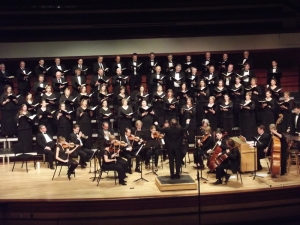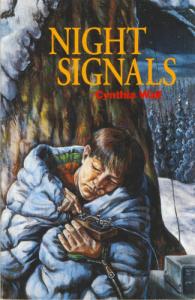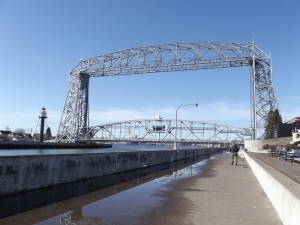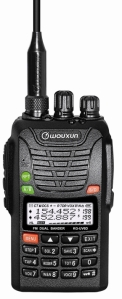Author Archive
 Today’s QSO with KØLR, Who Gave Me My Novice Code Test in 1978
Today’s QSO with KØLR, Who Gave Me My Novice Code Test in 1978
My online ARRL course, “Introduction to Emergency Communication,” is in full swing. I’m happy to say that it is pretty demanding. Not that the material itself has been especially difficult (yet), but the essay-assignments do require some thought — and other assignments are pushing me to do some new things on the air, like listening to several nets, critiquing an NCS (Net Control Station), and checking into a net (okay, I probably have checked into a net or two over the years, but it’s been so long that I hardly remember doing it).
Today I reaped some unexpected benefits from one of these assignments. Having been assigned to check into a formal net, I checked into the PICONET this morning. This was no small feat, since it was on 75 meters. My New Carolina Windom is only cut for 40 meters, and the automatic tuner on my Kenwood TS-440S has never been able to match it — the SWR is terrible! But using my old Drake MN-7 Matching Network, I was able to match it surprisingly well. So now I’m on 80/75 meters! I even made a CW contact with a fellow in Wisconsin, and got a decent signal report.
And after checking in this morning, I visited the PICONET website — and learned that Lyle Koehler, KØLR, would be the NCS for the PICONET this afternoon! Wow! Lyle is the ham who gave me my Novice code test back in 1978. I was only 10 years old, but I remember it like it was yesterday. I’ll never forget how I shook like a leaf on the couch in his living room while he sat beside me and tapped out 5 wpm code with a straight key and oscillator. When he told me I passed, I couldn’t wipe the grin off my face for the rest of the day!
So the thought of talking with Lyle again after all these years was enough to make me watch the clock, eager for the PICONET to open again at 1500 CDT. And sure enough, at the appointed hour I heard Lyle’s voice as he opened the net! I was his first check-in, and I took advantage of the net’s slow start to explain that he had given me my Novice code test over three decades ago. He remembered me!
What a pleasure to meet this fellow on the air after all these years.
 Big Week, Small Handheld
Big Week, Small Handheld

Exultate Festival Choir and Orchestra Performing Handel’s Messiah at Benson Great Hall, Arden Hills, MN on 03/11/12.
What a week and a half it’s been! Last weekend we sang three performances of Handel’s Messiah. The last one, pictured here, was the best — truly out of this world.
Afterward, without even changing out of my suit, I drove to Duluth with my wife to stay in a bed and breakfast for a couple nights. It wasn’t purely vacation; since this is a busy week for me, I did have to get some work done on this trip. Still, it was sufficient to give me newfound vigor upon my return. A day and a half back in Granite Falls allowed me to do some calling and get some other work done, and then it was back to the Twin Cities for two recording sessions to make a 3-CD set of Handel’s Messiah.
During this time I tested out my new handheld, which arrived just a couple days before it all began. I went with the dual-band (2m/70cm) Wouxun KG-UV6D (ham radio version), available here. If you buy one of these you’ll want to purchase the USB programming cable to set up your Wouxun using your computer. You may also want to buy an adapter or two to connect antennas to it. I’ve included some photographs in the slideshow below showing two such adapters — one for BNC, the other for PL-259. (By the way, you may click here to learn how you pronounce “Wouxun.”)
This radio is working great! Setting up channels using my laptop was a snap, and the controls on the radio itself are pretty simple, too. Using a larger “rubber duckie” antenna I’m able to hit the repeater 12 miles away in Montevideo (though I’m not sure yet how I sound “You sound like you’re sitting right next to me,” I’ve just been told.). Using the car-top antenna I’m full-quieting on the repeater 30 miles away in Marshall, and I can hit the repeaters a little farther away in Willmar, too (though I’m not sure yet how I sound on them). I made a few contacts in Duluth and the Twin Cities this week, and heard good reports each time. So far all I’ve used is 2m, and I’m looking forward to a 70cm contact. While I’m still a confirmed HF CW man, I’m glad to finally have a VHF/UHF handheld that works! If and when my son gets his Technician license, I’ve promised him that I’ll buy him a matching Wouxun KG-UV6D. It would really come in handy around here for him and I to each have one of these.
Click to view slideshow.
All photographs taken by my faithful beloved XYL, Monica, except for the stock photo of the KG-UV6D.
 ARES Center Stage at 2012 MNVOAD Training Conference
ARES Center Stage at 2012 MNVOAD Training Conference
 I’m off and running with the online ARRL course on Emergency Communications! Already I’m learning new things. Take VOAD’s, for instance — I’d never heard of them in my life, but now, thanks to this course, I’m signed up to attend the 2012 MNVOAD Training Conference.
I’m off and running with the online ARRL course on Emergency Communications! Already I’m learning new things. Take VOAD’s, for instance — I’d never heard of them in my life, but now, thanks to this course, I’m signed up to attend the 2012 MNVOAD Training Conference.
What is a VOAD? VOAD stands for “Voluntary Organizations Active in Disaster.” The first VOAD (and still the main VOAD) was NVOAD (National VOAD), born in 1970:
Hurricane Camille led to the formation of NVOAD. After Hurricane Camille, it became clear that voluntary agencies were responding to the needs of disaster victims in a fragmented, uncoordinated manner. Representatives from several voluntary agencies began to meet on a regular basis to share their respective activities, concerns, and frustrations in disaster response. On July 15, 1970, representatives from seven voluntary agencies came together in Washington, D.C. to form NVOAD. (FEMA course IS-288, “The Role of Voluntary Agencies in Emergency Management,” 2-11)
Those first seven agencies were the American Red Cross, Christian Reformed World Relief Committee, Mennonite Disaster Service, National Catholic Disaster Relief Committee, Seventh Day Adventists, Society of St. Vincent De Paul and Southern Baptist Disaster Relief. Now there are nearly 50 agencies involved, including the ARRL:
The mission of NVOAD is to foster more effective service to people affected by disasters. NVOAD, itself, does not deliver disaster response and recovery services. NVOAD coordinates planning efforts by many voluntary organizations responding to disaster. Member organizations provide more effective service and less duplication by getting together before disasters strike. Once disasters occur, NVOAD or an affiliated state VOAD encourages members and other voluntary agencies to convene on site. This cooperative effort has proven to be the most effective way for a wide variety of volunteers and organizations to work together in a crisis. (4-9)
The state VOAD movement began five years after NVOAD was born:
Not long after the development of NVOAD, State and regional VOAD organizations were created to ensure an effective response to disasters at the State and local levels. The first State VOAD was formed in 1975. The VOAD movement initially grew without much order and without official sanction or direction from NVOAD. However, in 1988 NVOAD developed formal procedures for chartering State and local VOAD members. At this time, there are chartered State VOAD organizations in almost all the U.S. states and territories, and there are a growing number of local VOADs. (4-13)
The Minnesota VOAD has 37 member organizations, including the ARRL — and this year, RACES/ARES is taking center stage at the 2012 MNVOAD Training Conference on Saturday, March 24. The keynote speaker is Peter Angelos, KCØKRI:
9:00-10:00 Keystone Session – Pagami Creek Fire Response – Peter Angelos
The Lake County Emergency Management response to the Pagami Creek Fire (September 2011) and the role Lake County RACES/ARES played is a good example to illustrate effective and successful use of affiliated volunteer organizations in incident management. This presentation will outline a brief description of the incident, the specific support that RACES/ARES provided for logistical and situational communication, and most importantly–the organizational practices and principles that lead to success.
I’m looking forward to hearing what Mr. Angelos has to say about how RACES/ARES helped fight the Pagami Creek Fire.
But perhaps even more valuable for me will be the rest of the training day, which has nothing to do with Amateur Radio. After all, the whole point of VOAD is to learn how to work with one another efficiently and effectively when the time comes!
 CQ CLASSICAL MUSICIANS DE NØIP
CQ CLASSICAL MUSICIANS DE NØIP
How many of you ham radio operators are also classical musicians? (I’m using “classical” loosely here, the way NPR does — not merely referring to the classical period per se, but broadly referring to all music of higher artistic expression.) I’ve always been intrigued by this kind of simultaneous development of artistic ability and scientific/technical ability. I’ve long heard that the two complement one another nicely, e.g. I’ve heard that musicians make better programmers.
Right now I’m working hard with the Exultate Festival Choir and Orchestra to get ready for an upcoming performance of The Messiah by George Frideric Handel. Ham Radio has taken a back seat in my life during this seven-week project (as well it should, if we have our priorities straight). Yesterday’s rehearsal in the Twin Cities was exhilarating, and once again proved that the 2 1/2 hour drive to get there is definitely worth it. Dr. Tom Rossin is an outstanding conductor, and the choir is so good I have to pinch myself sometimes to see if my place there in the bass section isn’t just a dream. (If any of you happen to be in the Twin Cities on the weekend of March 9-11 and would like to hear The Messiah in its entirety, send me an email and I’ll email you a coupon that will get you two tickets for the price of one.)
Music was part of my life as a boy before I became a ham, but it didn’t blossom until 13 years ago at the age of 31. That was when my brother Tom (NØBSY) got me involved in a cappella shape-note singing from The Sacred Harp. This taught me how to sing parts; without it I could never have gotten into choral singing the way I have. My first choral work was with Exultate, singing Bach’s Mass in B-Minor, followed by Brahms’ German Requiem (in Rutter’s English translation). Since then I’ve been involved in a small choir here in the church, too. All of this has been a huge surprise to me. Up until I was 31 years old I was afraid to sing in front of other people, and I couldn’t sing parts if my life depended on it! So if any of you think you can’t sing, think twice — you might be surprised at what has been lying dormant in those vocal chords of yours, just waiting for the proper nudge to burst forth into beautiful song.
I see Tyler Pattison, N7TFP, is not only an accomplished ham radio operator but an accomplished musician. Along with his excellent tutorials for ham radio operators, Tyler has also posted a video of his performance of Charles-Marie Widor’s Toccata in F from Symphony No. 5. In this video you can see the organ from Tyler’s perspective, not only as a musician but as an electrical engineer. He is bringing both sides of his brain to bear upon the magnificent task of rebuilding and upgrading this organ — and then making beautiful music on it.
How many others like Tyler and myself are out there? If you are a musician and an amateur radio operator, what do you think? Has one influenced the other in your life? How?
 The ARRL Handbook
The ARRL Handbook
 My family sure was nice to me on my birthday this past Wednesday! One of the gifts I received was something I’ve wanted, but I couldn’t bring myself to cough up the cash for it: the 2012 edition of The ARRL Handbook for Radio Communications, graciously given to me by my daughter. Since the most recent copy on my shelves was several decades old, I was glad to get my hands on it.
My family sure was nice to me on my birthday this past Wednesday! One of the gifts I received was something I’ve wanted, but I couldn’t bring myself to cough up the cash for it: the 2012 edition of The ARRL Handbook for Radio Communications, graciously given to me by my daughter. Since the most recent copy on my shelves was several decades old, I was glad to get my hands on it.
I can see why this is a required textbook for the classes my friend Scott has been taking. He is a Signalman with BNSF Railway and periodically travels to Kansas City for training (no pun intended). The ARRL Handbook is a great resource for more than just ham radio operators. It is well-written and comprehensive — so comprehensive that I felt like an ignoramus as I paged through it on my birthday! I may have my Amateur Extra Class, but now I see more clearly than ever how little I really know.
But don’t let that scare you away from this book, Technicians. There’s still plenty in this book that you will find accessible, and anyhow we’re never going to learn if we don’t push ourselves.
One thing that isn’t covered in this book is the topic of operating procedures. But I can see why this topic has been relegated to a book of its own. The ARRL Handbook is quite a hefty tome as it is.
As with most of the ARRL library, you’ll find this book cheaper over at Amazon.
 My Trusty Ol’ Heathkit HW-8
My Trusty Ol’ Heathkit HW-8
 Reminiscing about my early days in ham radio, one of the things that really stands out is a gift my parents gave me 32 years ago — a Heathkit HW-8, an 80/40/20/15 meter QRP CW transceiver! It was an utter surprise to me; I never had the slightest inkling that it was coming. I was 12 years old and had never built anything like that before. How wonderfully mysterious all those parts looked as I pulled them out and set them on the dinner table!
Reminiscing about my early days in ham radio, one of the things that really stands out is a gift my parents gave me 32 years ago — a Heathkit HW-8, an 80/40/20/15 meter QRP CW transceiver! It was an utter surprise to me; I never had the slightest inkling that it was coming. I was 12 years old and had never built anything like that before. How wonderfully mysterious all those parts looked as I pulled them out and set them on the dinner table!
Looking back on it now, I realize how patient my mother was to let me take over that table in the dining room. As I recall, I worked nonstop to build the little rig and its power supply. Ten days later, on January 3, 1980, it was finally ready. My dad took a look at it and said it was ready for the “smoke test.” You can imagine how I held my breath as we plugged it in and turned it on. I was waiting for something on the circuit board to go up in a puff of smoke! Nothing exploded, so I was ready to take it into the shack and hook it up to an antenna and straight key. “Ready” is an understatement — I was so excited to get that rig on the air I was nearly bursting at the seams!
I picked up the phone and called Dr. Bernard “Bernie” Northrup, KAØDKN, a friend of mine across town, to see if he would get on the air and give me a signal report. Dr. Northrup (later NØCIE, now a silent key) was a professor at Central Baptist Theological Seminary of Minneapolis and a fellow member at Fourth Baptist Church, Minneapolis. Not long before, he had gotten his license after hearing me talk incessantly about ham radio at church (I’m afraid back then I was more interested in ham radio than spiritual things.). Anyhow, I called him (around suppertime, I see by my log!) and he graciously agreed to get on the air.
And sure enough, my HW-8 worked! After a half hour with Dr. Northrup on 15 meters I was ready for my first “real” QSO, as I thought of it. Tuning around the band, I heard ZL4KI. My heart started thumping as I prepared to call him. Could he really hear me even though I was sending with no more power than that of a small flashlight? My hand was shaking as I tapped out ZL4KI ZL4KI ZL4KI DE NØART NØART NØART KN and waited, flushed with excitement. I could hardly believe it when I heard my callsign as he came back to me! To think that the signal from this little radio, built with my own hands, was being heard 8,700 miles away in Invercargill, New Zealand! Amazing!
Other radios have come and gone, but that trusty ol’ HW-8 is still with me. As a boy I brought it with me to church camp and set it up in the lodge, tapping out CW while the other boys played games. Once on a trip to Louisville, KY I set it up on the second floor of my grandparents’ house — with a TV-twin-lead dipole my father had built — and worked a station in Poland. When I moved into my first apartment as a newlywed, I set it up with that same dipole in my (below-grade!) apartment. On a couple of memorable, crisp, autumn days, I brought it to a local park with a thermos of hot cocoa, sat down on a carpet of pine needles, and thrilled to the sound of soft static and CW.
And last summer, when I just couldn’t wait until I got my shack set up at my new QTH, I set it up on the picnic table in my backyard with an OCF dipole tossed into the trees. Even though that antenna was so low its feedpoint rested on the picnic table, I still worked both coasts on 20m with my trusty ol’ Heathkit HW-8! What a great little rig. Thanks, Mom and Dad, for giving me such a great gift!
 The Road Home and Other Ham Radio Novels
The Road Home and Other Ham Radio Novels

On p. 32 of the March, 2012 edition of QST that came out this week, I am pleased to see a review of The Road Home, a novel written by Andrew Baze, AB8L. Coincidentally my son and I just finished reading this book, and we thoroughly enjoyed it. Despite a few typos and minor grammatical errors (specifically, the use of the indicative mood where the subjunctive mood should have been used), it is very well written. The plot is plausible and captivating. Mr. Baze makes ham radio (2m FM and APRS) an integral part of the story, and he makes it work — it doesn’t seem at all as though he were straining to slip it in somehow. Furthermore he displays a high degree of competence in operating procedures, emergency preparedness, and even defensive tactics.
While this book is light reading, there is still some character development of the young man who is the main character of the story. Refreshingly, the boy’s father is his guide (rather than being marginalized or vilified as parents often are in teenage fiction). Not only does Mr. Baze inspire a young person to get a ham radio license, he succeeds in developing the moral imagination of his readers. The Road Home cultivates an affection for such admirable qualities as diligence, perseverance, courage, level-headedness, familial love, compassion, and a chivalric desire to avoid violence yet defend women from evil with deadly force when necessary.
You can read this book for free, if you have a Kindle and an Amazon Prime account, by borrowing it from the Kindle Owners’ Lending Library for Amazon Prime Members.
 Other novels that my children and I have enjoyed are those written by Cynthia Wall, KA7ITT: Night Signals, Hostage in the Woods, Firewatch!, Easy Target, Disappearing Act, and A Spark to the Past. These six books are a series chronicling the adventures of fictional characters Kim Stafford, KA7SJP, and her boyfriend Marc, KA7ITR. They are definitely aimed at children, but if you’re like me you’ll still read them — it’s so hard to find novels incorporating ham radio that you just can’t pass these up.
Other novels that my children and I have enjoyed are those written by Cynthia Wall, KA7ITT: Night Signals, Hostage in the Woods, Firewatch!, Easy Target, Disappearing Act, and A Spark to the Past. These six books are a series chronicling the adventures of fictional characters Kim Stafford, KA7SJP, and her boyfriend Marc, KA7ITR. They are definitely aimed at children, but if you’re like me you’ll still read them — it’s so hard to find novels incorporating ham radio that you just can’t pass these up.
Another novel that incorporates ham radio is Cornbread Road, by Jeff Davis, KE9V. Mr. Davis released it as an audio-book in a series of podcasts in 2010-2011, and my wife and I enjoyed listening to it together. The podcast is not currently available but hopefully it will be back up soon. Cornbread Road is aimed at adults. The main character is a ham who gets involved with a secret society of ham radio operators led by a mysterious figure with a past, a ham who is an inventive genius and who is himself caught up in a web of international intrigue. While the plot may tax your ability to suspend disbelief, it is still an amusing story and throws in a little of everything in ham radio.
Do you have any ham radio novels to recommend? I dimly recall one or two that I nearly wore out as a child (back in the days when I would ride my bicycle to the local library and read my favorite books over and over), but I couldn’t tell you much about them now. If you know of any — and where to find them — please chime in with a comment!
















